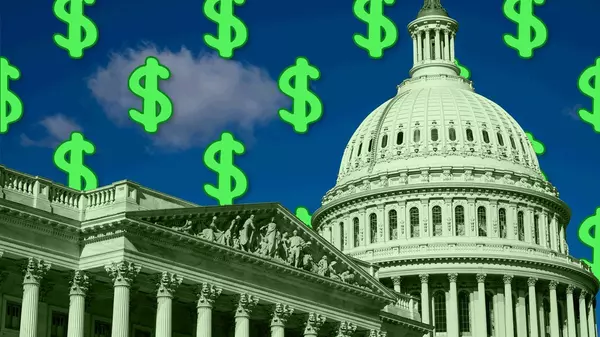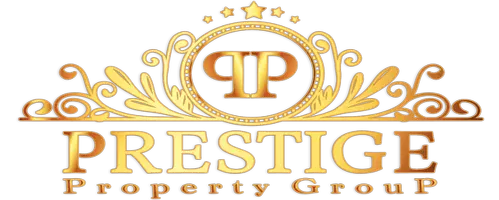2025’s Hottest Home Upgrades: The Trendsetting Touches That Can Make or Break a Sale
Every year brings a new wave of home trends, but 2025’s most desirable upgrades have little to do with decor and everything to do with efficiency.
Four of the five fastest-growing home features this year are tied to energy performance and sustainability, according to the Hottest Home Trends in 2025 report from Realtor.com®. Compared to a year ago, homes that save water, generate power, or cut other costs are commanding more attention than those that simply look good.
“The acceleration of efficiency-focused features is striking,” says Anthony Smith, senior economist at Realtor.com. The "scale of change, in just a single year, hints toward a meaningful inflection.”
Among the features leading the way are WaterSense fixtures. These appliances use at least 20% less water than standard varieties and appear in nearly 290% more listings than a year ago. That gangbusters growth far outpaces aesthetic trends like two-tone cabinetry or design styles like coastal modern.
“It’s interesting to see such a strong pivot toward function-driven features in listings, especially those tied to measurable savings in water or energy use,” adds Smith.
As utility bills climb at more than twice the rate of inflation, the home trends shaping 2025 are less about taste and more about survival in an increasingly costly, energy-conscious world.
Efficiency takes the lead
Efficiency is emerging as a new baseline for value. Across the 2025 housing market, energy-conscious and cost-cutting upgrades are climbing faster than any other category.
“Many aspects of energy efficiency have moved from a niche design ethos to a mainstream selling point. These homes are better equipped for a future where operating costs and environmental performance are under closer scrutiny,” explains Smith.
Four of the five fastest-growing home features this year are tied to energy performance: WaterSense fixtures, up nearly 290% year over year, lead the list, followed by biophilic indoor-outdoor features that can reduce energy consumption (+162.6%); net-zero-ready homes (+100%); and EV charging setups (+91%).
And the adoption of these features isn’t just relegated to luxury markets, says Smith. He points to features like WaterSense fixtures that appear in listings with a median list price of $628,000.
Similarly, net-zero-ready homes—a house built to the standard of producing as much or more energy than it consumes—appear in listings with a median price of $450,000. That’s significantly closer to the national median list price of $424,200, compared to the national luxury threshold of roughly $1.22 million.
“That’s an indication that a greener design language is filtering into the everyday home,” he says.
In fact, median-priced homes are driving the shift toward sustainability, according to the report’s findings. Aesthetic-driven features like backlit onyx or aged metal accents are clustered in higher-priced listings.
“By comparison, the most common eco-forward features, such as EV charging or solar and battery backup, are found in homes spanning a wide price range, suggesting broader adoption and consumer familiarity,” says Smith. “This diffusion hints that what began as a luxury aspiration is evolving into a market expectation.”
But taste may not be the only thing driving the shift. Math may prove to be another important factor. With energy prices still elevated and more homeowners chasing tax incentives, efficiency now sells as both an economic and ethical upgrade.
Federal incentives and policy pressure
Federal incentives helped turn energy efficiency from a fringe ideal into a mainstream movement. But as the clock ticks down on key tax credits, the future of that progress is less certain.
Among the biggest drivers have been the Inflation Reduction Act’s Energy Efficient Home Improvement Credit and the Residential Clean Energy Credit, which covered up to 30% of the cost for some green home improvements.
“These federal incentives, primarily the [Inflation Reduction Act], are absolutely driving up demand for solar, EV chargers, and high-efficiency homes out here in Arizona,” explains Greg Field, owner and senior energy consultant at PGT Home Energy Solutions. “That 30% solar tax credit—25D—is the main reason people are finally pulling the trigger on solar and batteries.”
However, many of these tax credits are set to expire at the end of this year. In response, many homeowners have rushed to install these upgrades before the end of the year, says Field. But it’s catapulted them headfirst into a maze of overlapping programs, limited contractors, and a changing federal tax landscape.
“The biggest pain points are complexity and contractor availability,” he says. “Homeowners get confused with all the different tax credits, rebates, and income limits. With everyone wanting solar and heat pumps now, it's hard to find a certified contractor who can start the job quickly and finish it before year end to get qualified for the tax credit.”
Permitting can also present a problem, as many localities don’t have streamlined processes to keep pace with the growing demand. Despite those barriers, Field says the long-term case for these upgrades is only getting stronger as utilities modernize and rate structures evolve.
“The value of things like solar and batteries long term is actually getting better because of the changing nature of our grid,” he says. “The utility policy of the future is going to continue pushing us to charge during the off-peak, cheap hours, so having a ‘smart’ charger that can talk to the grid will be a must for saving money and avoiding demand charges.”
Bringing nature indoors
But if the most popular trends are high-tech, the emotional center of 2025 home design looks surprisingly organic. The data shows a clear softening at the edges of the high-tech home with biophilic indoor-outdoor features up 163% year over year, and coastal modern design language surging 125%.
These features are redefining the feel of mid- and high-end listings, blending sustainability with serenity. Designers are capitalizing on the shift with large sliding glass doors, interior courtyards, living walls, and generous natural light. The appeal is equal parts sensory and practical: Homes that feel connected to the outdoors are increasingly seen as healthier, calmer, and more valuable.
In the same way that efficiency trends speak to cost and control, the growth of the trend in natural designs reflects a deeper psychological desire to balance the digital saturation of modern life with organic textures.
Put another way: Buyers want spaces that restore, not just impress.
Smarter, more connected homes
The same hybrid routines that reshaped work have trickled down into how buyers judge a home’s value, with a clear spike in features that appeal to digital lifestyles.
Listings with built-in coffee systems are up 72% year over year, with smart lighting scenes up 70%, and hardwired ethernet jumping 66%. The growth of these features points to the enduring trend of homeowners investing in tools that support efficiency in remote or hybrid work.
Once the domain of high-end new construction, these systems are have spread to midtier listings, signaling that “smart” has shifted from futuristic perk to everyday expectation.
What’s out
The features falling out of favor in 2025 say as much about buyers’ values as the ones climbing the charts. Judging by the reports findings, the era of excess is fading fast, replaced by a preference for practicality and sustainability.
Once considered ultimate status symbols, infinity-edge pools (down 25% from a year ago), three-car garages (down 19%), and formal dining rooms (down 25%) are now sliding down the list of must-haves.
Where older luxury once celebrated space and spectacle, today’s buyer values efficiency, adaptability, and environmental mindfulness.
The lasting shift
Taken together, the trends of 2025 reflect a more calculating kind of homebuyer: one who sees their house not just as shelter, but also as a consumer of energy, data, and resources. Efficiency, smart design, and sustainable features are both aesthetic preferences and part of a larger financial strategy.
“This trend can be leveraged by builders, framing green readiness as a premium differentiator,” says Smith. “Net-zero-ready is a good example. It doesn’t require panels on Day 1 but signals that the home’s infrastructure is future-proofed for them. That framing turns another level of efficiency into an upgrade path, aligning with how today’s buyers think about technology and long-term value.”
As homeowners navigate higher energy costs and mounting climate pressures, performance has become the new prestige.
In Smith's words: "This surge reflects both pragmatic economics and strategic marketing: Buyers want lower bills and resilience, while sellers and builders see value in branding homes as efficient and forward-looking."
Categories
Recent Posts










GET MORE INFORMATION

